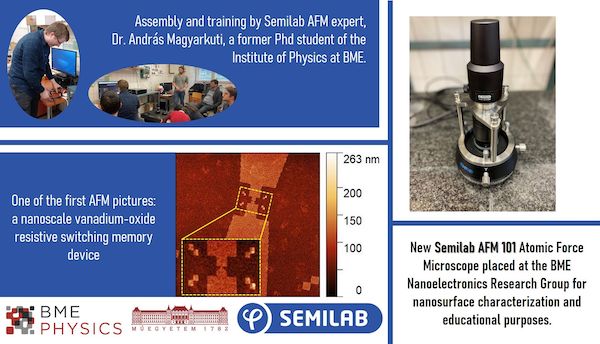BME Institute of Physics researchers studied novel solar cell materials using time-resolved photoconductivity measurements. Research was carried out with collaborators in Lausanne, Switzerland (EPFL), in the USA (University of Notre Dame), and in Budapest (ELKH Wigner Research Centre for Physics, and Semilab Semiconductor Physics Laboratory Co. Ltd.) The open-access publication has been published in ACS Photonics, with the first authorship of András Bojtor, PhD student of the BME Doctoral School of Physical Sciences.
Press coverage of the research, in Hungarian, at hvg.hu.
András Bojtor, Sándor Kollarics, Bence Gábor Márkus, Andrzej Sienkiewicz, Márton Kollár, László Forró, and Ferenc Simon
Ultralong Charge Carrier Recombination Time in Methylammonium Lead Halide Perovskites












